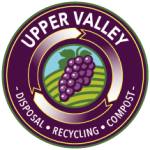Residential Compost Service
Yard & Food Waste
Upper Valley Disposal & Recycling provides a green cart for the weekly roadside collection of compostable materials like yard waste, food waste and food-soiled papers.
As of January 1, 2022, you must sort your recyclables and organic waste including paper, cardboard, yard waste, food scraps, and food soiled paper from the garbage. It’s the law!
GREEN COMPOST Cart
Did you know that Up Valley residents can now put food scraps and food-soiled paper along with yard trimmings in their green waste carts for weekly curbside collection AND it’s now the law?
As of January 1, 2022, a new law (SB 1383) requires that all Californian’s properly sort their organic waste for composting from materials that go to the landfill. This service is included as part of your residential service package with Upper Valley Disposal & Recycling. The good news is, as long as you’re sorting all your organic waste into your green cart, you’re in compliance.
Compost (Green) carts are only available in the 96-gallon size.
Visit our Residential Services page to review the cart options and set out rules for residential customers.

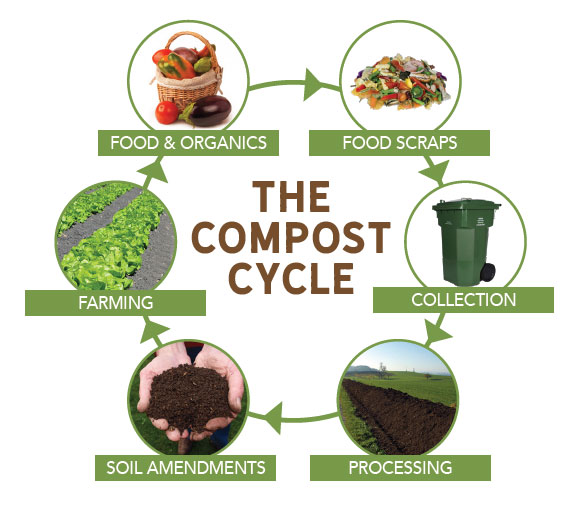
Why does adding food, food soiled paper and yard waste to my green compost cart matter?
The average up valley resident generates 4.5 pounds of trash per day. Of that 4.5 pounds, approximately one third is compostable organic material.
If all UVD&R household customers composted, that would mean 548 pounds of organic material per person annually were no longer wasted in landfills. That would be about 11,000 TONS per year in total!
When organic materials end up in landfills, they generate methane, a powerful greenhouse gas. UVD&R’s compost facility instead turns this valuable material into organic compost. When compost is used in landscape and agriculture it builds soil nutrients, conserves water, and reduces the need for fertilizers.
What Belongs in COMPOST
Put only yard waste, food scraps & food soiled paper into your green cart. Please no place recyclables or garbage in the green cart. Do not overfill; make sure that the lid closes securely when placed at the curb for collection. Please remember that any materials extending beyond the rim of any cart will be subject to an extra charge or your cart not being picked up.
These materials can be placed in the yard waste/food scraps cart.
Food Scraps
- All prepared, cooked & spoiled food
- Fruits and vegetables
- Meat, Poultry, fish & shellfish including bones
- Bread, pasta, grain, rice & beans
- Egg shells, coffee grounds
- Dairy products & cheese
Food-Soiled Paper
- Unlined paper plates, paper cups, paper napkins, paper towels & paper bags
- Bamboo paper plates & cutlery
- Food-soiled pizza boxes and paper bags
- Paper coffee filters and tea bags
- Plain, uncoated shredded paper & paper egg cartons
Yard Waste
- Leaves, flowers & grass
- Shrubs, twigs and branches (up to 3 feet)
- Unpainted or untreated wood scraps
BPI Certified Compostable Bags
- BPI Certified Compostable Bags are ok!
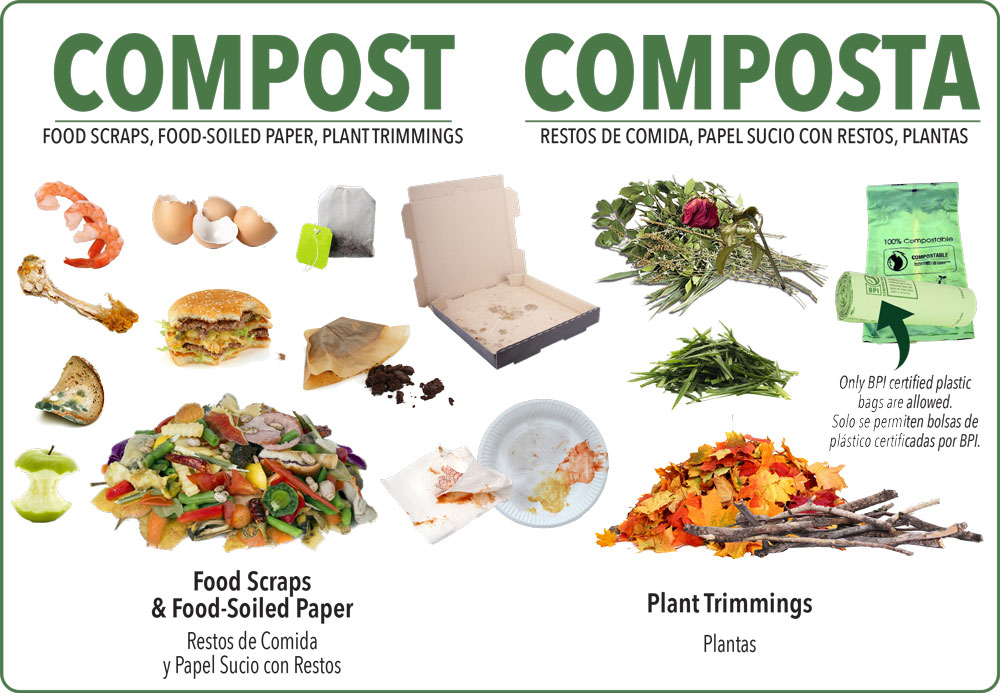
What Doesn’t Belong in Compost
These materials can be placed in the yard waste/food scraps cart(s).
- Plastic bags (except BPI Certified Compostable)
- Milk and juice cartons
- Glass
- Lawn sod
- Ash or burned material
- Painted or treated wood
- Pet waste or manure
- Dirt, rock, sand or concrete
- Compostable plastic cups, utensils & containers
- Waxed Cardboard and paper
- Household garbage
- Wipes, diapers, masks & feminine hygiene products

COMPOST Contamination
We know that it can be difficult to determine what materials are compostable. All materials in the green carts or compost bins go to the Upper Valley Composting Facility where they are made into a nutrient rich soil amendment, compost that is used to grow our food and grapes for the wine we may drink. Contamination is very hard to remove once it is in the compost container.
Why Reducing Contamination Matters
Contaminants can have serious negative consequences for a compost program. Here are just a few examples:
- Reduced compost production – Contamination can cause materials that would otherwise be composted to be landfilled.
- More materials in the landfill – When organic materials end up in landfills, they generate methane, a powerful greenhouse gas which contributes to climate change.
- Safety hazards for compost workers – Since our workers are sorting materials by hand and are in direct contact with these materials, things like broken glass, sharp metals, and wood with nails, can be very dangerous to the health of workers.
What is Compost Contamination?
Contamination is the term used to describe materials that should NOT go into the compost containers. Besides ruining good material, contamination increases labor costs at processing facilities and results in less organic compost being made.
Common Compost Contaminants
- Plastic bags and other plastic packaging (should go into trash). No other packaging labeled compostable can go in to the container.
- Garbage bags (Only BPI certified compostable plastic bags are accepted. Other plastic bags belong in the garbage.
- Milk and juice cartons (should go into recycling).
- Dirt, rock, sand or concrete (should go in a debris box or self-hauled to Clover Flat)
- Pet waste (should go into trash)
- Clothing (donate or goes into trash)
How to Prevent Contamination
- Review the list of what materials CAN be composted.
- Unfortunately, when in doubt, it’s better to throw it out (in the garbage) than to risk contaminating your compost container.
How We Manage Compost Contamination at UVD&R
Compost carts WILL NOT be emptied if contaminated with trash or non-compostable materials.
If the driver notices contamination, he/she may not be able to empty your container. If this happens, the driver will take a picture and enter a code in the on-board computer to let the office know the cart was “skipped” due to contamination. You will receive a call from our office so they can let you know what the driver found and help provide more education so it does not happen in the future.
In some case, the driver may be able to also leave a Non-Collection Notice VIOLATION TAG will be left on the container letting you know why the cart was not collected and an OOPS TAG which will tell you what contamination was found so will know the next time. You will then be given the opportunity to clean up the container so it can be emptied on your next service say. Or you may opt to request a special pickup (for a fee) after removing the contaminants from the container.
How do I get with started with composting?
- Collect food scraps while preparing meals, scraping plates and cleaning spoiled food out the refrigerator. Include paper towels, napkins, paper coffee filters and coffee grounds. It all adds up!
- Empty your kitchen compost pail, including any liner, into your green compost cart.
- Place your cart out for weekly pickup on your regular collection day.
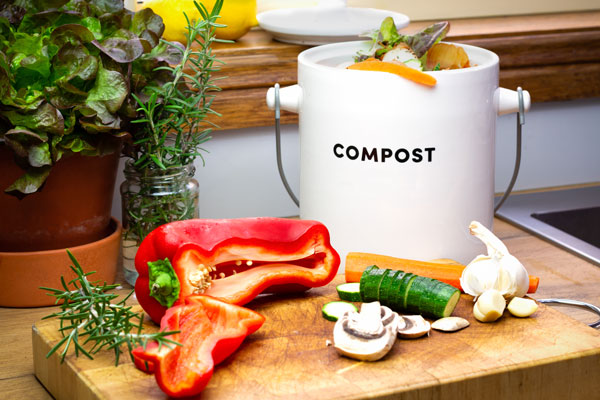
Compost Pail & Liners
All residential UVD&R customers are eligible to receive a free Sure Close compost pail. Pails were delivered to homes at the end of 2021. If you did not receive a pail, please call office.
You can also utilize a can, bucket or any other container that suits your needs and space.
You can line your pail with newspaper or paper towels, which help keep your pail clean, and reduce odors. Instead of using a liner, you can rinse your pail after emptying it which will also help keep the “ick factor” at bay!
If you choose to line your kitchen pail with compostable bags, they must meet Biodegradable Products Institute (BPI) standards. See below.
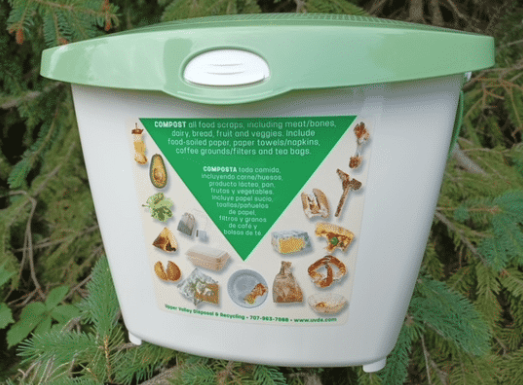
BPI Certified Bags

If you choose to collect food scraps with compostable bags, they must meet Biodegradable Products Institute (BPI) standards and show the BPI symbol.
Bags can be purchased at:
- CalMart in Calistoga
- Silverado Ace Hardware in Calistoga
- Steve’s Hardware Inc. in St. Helena
- Howell Mountain Ace Hardware in Angwin
(only sells 13-gallon bags) - Safeway in St. Helena
- Sunshine Foods in St. Helena
- Online at Amazon, Target, Walmart, Safeway and more!
Composting Tips from Your Neighbors
Shoo Fly!
If flies cannot get to your food scraps, they will leave them alone. To keep fruit flies and other bugs out of your kitchen pail and green cart always keep the lids closed tight. As an extra precaution, cover your food scraps with paper towels or newspaper and tuck the edges along the inner wall of the pail.
COMBAT FUNK
Bacteria are the cause of most foul odors. Moist food scraps and juices can cause the rapid build-up of bacteria. For this reason, we ask you not to put juices or liquids in green carts with your food scraps. You can absorb remnant moisture by lining your kitchen pail and green cart with paper (newspaper, paper towels, napkins, paper bags, etc.) or by adding dry yard waste like leaves and grass to your green cart. Heat also encourages bacteria growth. Keep your kitchen pail in a cool place and green cart out of the sun until you take it to the curb.Fight Furry Critters
The smell of meat and dairy products is often what lures critters like rats, mice or raccoons to your garbage and food scraps. If possible, cover your food scraps with yard waste to help minimize odors. Make sure the green cart lid is closed tight. Remember, your pick-up services require that the lids of carts open easily so please do not use weights, bungee cords, or rope to keep lids closed. These devices might also inadvertently end up in the trucks with the food scraps and yard waste

Compost Cart Care
- Layer “greens & browns” to reduce odors and to contain messier foods.
- Green materials: fresh grass clippings, food scraps, green leaves and green plant trimmings (things with some moisture content in them).
- Brown materials: dry leaves, paper products, twigs, branches.
- Use a BPI Certified compostable bag or a newspaper liner in your kitchen container to help keep food scraps from touching the inside of your green compost cart.
- Store your cart in the shade in hot weather.
- Sprinkle baking soda in your compost cart to reduce odors and deter insects.
- If needed, use mild soap and water to clean your green cart. Pour dirty water onto grass or gravel, not down the storm drain.
Why can’t I use my garbage disposal for food scraps?
Garbage disposals aren’t meant to handle large quantities of food. Sending food into the sewer requires additional water to flush the food down your drain. Conserve water by collecting your food scraps for composting. By doing this, not only do we protect the environment, but we also capture personal cost savings from less water use and community savings from less wastewater treatment costs.
Soiled paper, bones, seafood shells, and fruit pits, as well as fats, solidified oils, and grease (FOG) should never be put down the drain, but can definitely be composted. FOG can cause sewer blockages leading to spills and overflows, which are harmful to the environment and public health.
Missed Collection
We make every effort to emptying your container(s) on your service day, but on occasion, we may miss you. We apologize if this happens.
- If our driver skips collection, please call our office within two business days so we can return at no cost to you.
- If your miss is discovered after office hours, you can leave us a message through our contact form.
- We are all human and may accidently forgot to set-out our containers for collection. If this happens, please call our office hours and let us know. We can offer a one-time courtesy fee waiver and allow you to set out an extra bag the next pick-up day equal to your missed collection without charge. If you cannot wait until the next week to set-out extra garbage, we can go back and empty the cart(s) for an additional $25 per cart and $75 per bin.
- There are other instances when your container(s) may not be emptied. This may be because the container was not out, or it was blocked by something that prevented us from safely emptying it, or the container had prohibited items. If this was the case, we will leave you a notice with instructions on how to correct the problem (such as the cart was not out, the container was blocked, or the contents of the container had prohibited materials). We can return to empty the container for an additional fee per container.
Household Hazardous Waste (HHW)
Dispose of materials like batteries, paints and household cleaners properly at the Napa County HHW Facility.
Napa Compost Sales!
We sell compost made from the food scraps and yard waste we collect.
